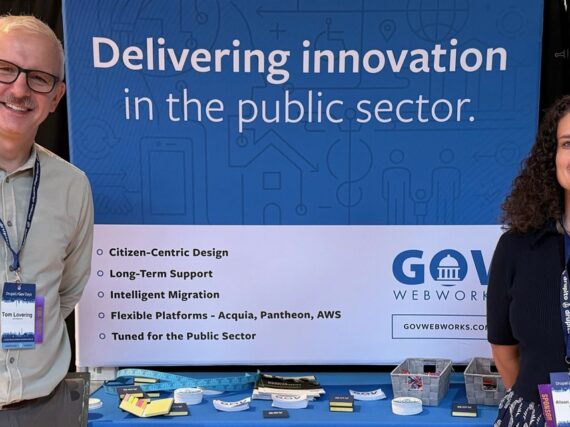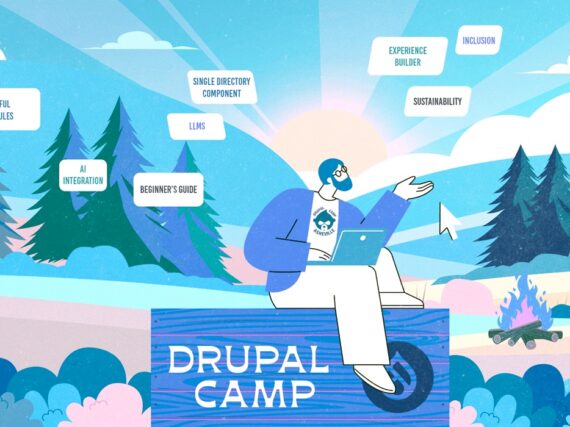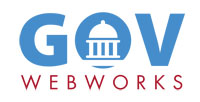User data plays a crucial role in shaping content for public sector websites. At the Missouri Department of Transportation (MoDOT), insights from road usage trends help ensure the right information reaches the public at the right time—making the difference between a smooth commute and a traffic jam. So how does MoDOT use data to drive clear, timely communication online? We asked Senior Communications Specialist Kellen Burns.
“We use analytics to understand what’s most important to our users and how they want to consume that information,” Kellen says. “Because data can be influenced by many external factors, we’ve developed dashboards that help us detect short- and long-term trends.”
To transform the agency website’s usability, accessibility, and mobile performance, Kellen coordinated MoDOT’s cross-divisional team and helped train more than 100 content contributors. His efforts have resulted in a more efficient, user-friendly site, with mobile traffic increasing from 43% to 53%, among other success factors.
He shares some tips here for other public sector agencies on managing online content with Drupal.
What is MoDOT’s website mission?
The site exists to serve Missouri travelers by providing timely, relevant information about our highways and transportation system. Travelers are seeking vital road information across the state.
Our mission is to deliver that information clearly and intuitively, with a strong focus on customer service.
How do you meet this mission?
Just as highway designers use data to create safer infrastructure, we use traffic and engagement data to train our users to more easily access and understand transportation information online.
The “one team” culture is especially meaningful. We regularly host content board meetings where contributors from across the state share ideas. This cross-team collaboration sharpens our focus and improves communication across all MoDOT web channels.
How do you balance user needs with internal content management goals?
MoDOT is divided into seven districts, each with its own content contributors. Our internal goal was to streamline and standardize the structure and tagging across all regions of the website, which directly benefited users by improving navigation and reducing dead ends. In short, when the contributors follow consistent tagging and content practices, users have a smoother experience.
Luckily, our internal goals and user needs aligned naturally.
We began with News, Projects, and Files in 2018. Using an interactive approach based on the expertise of our communications staff, feedback and analytics, we’ve been able to define consistent fields in Projects and News and we’ve since added Public Meetings and Work Zones to better meet customer expectations.
How did you improve the site search?
Based on analytics, we found that users consistently come to our site for:
- News
- Projects
- Work Zones
- Files/Media
- Public Meetings
So we built search views around those areas to make them easy to find.
This supported our two main goals:
- Outstanding customer service: Users can easily access information that affects them.
- Promoting safe behavior: When users can find updates and alerts, they’re more likely to make safe travel decisions.
What UI elements have you refined to support accessibility and usability?
We use purposeful design elements to communicate meaning quickly, especially since we deal with a lot of text-based information. Color-coded filters help users recognize project status at a glance:
- Green = Completed
- Blue = In Progress
- Brown = Planning
- Yellow = Delayed
Route icons (Interstate, U.S. Route, State Route) help users visually identify affected roadways. These UI enhancements make scanning and finding information easier for all users, including seniors.
How does the site support user access to project information?
Beyond the search filters, we added reusable project blocks that let us group and highlight projects—like Improve I-70 or Forward 44—based on tags. These category pages give extra visibility to long-term efforts that span multiple counties or routes.
This way, users who may not know what to search for can still find relevant projects based on their location or corridor.
What’s the business impact of standardizing project content?
By making content more consistent, we’ve significantly reduced customer service calls.
More users are able to self-serve—they find what they need online without calling for help. This saves time for both customers and MoDOT staff, making the site a more efficient communication tool.
How did you train and support more than 100 content contributors?
The secret isn’t just training—it’s ongoing support and a shared mindset.
It started with identifying strong content contributors across our divisions and districts—people who embrace our values: be bold, be better, be accountable, and be one team. Moving to a modern CMS meant rethinking how content is created, so we needed contributors who were open to change and saw content creation as part of their core responsibility.
A key element was our partnership with GovWebworks. Sarah Crossman provided foundational training to our core team, who then trained others within their regions. We also created a digital training library, with short videos and resources on specific content tasks. That way, anyone can get the help they need, when they need it. But most importantly, contributors knew they weren’t alone. Ongoing access to communications team support has been crucial. That safety net encouraged even the most hesitant staff to try something new.
Is it better to have more or fewer content contributors?
It depends on your organization, but in our case, having more content contributors—with the right support and structure—has been a strength. Our distributed model allows each district to share timely, locally relevant updates while following centralized guidelines for quality and consistency. That said, without support, training, and a strong governance model, having many contributors can lead to inconsistency or outdated content.
The key is balancing distributed ownership with centralized guidance, tools, and regular check-ins to keep everyone aligned.
What advice would you give other agencies using Drupal for multi-contributor sites?
- Let data guide your decisions. It can be hard to get buy-in across departments, but data eliminates bias and helps you focus on real user needs.
- Use Drupal’s flexibility to give users multiple ways to find content—search, filters, tags, categories, reusable blocks. Don’t assume everyone thinks the same way.
- Finally, support your contributors. A large number of content managers can work well if they’re trained, empowered, and part of a shared system.
Learn more
Contact GovWebworks for a free consultation on how to improve your website.
Related reading:
- Expanding Services in the State of Missouri: Statewide Project-Based Information Technology Consulting Services
- Case Study: Missouri Department of Transportation
- Effective Site Search: A guide to enhancing Drupal site search for better content findability








